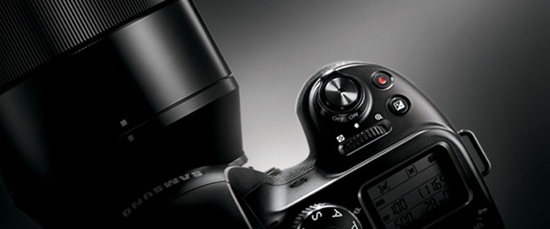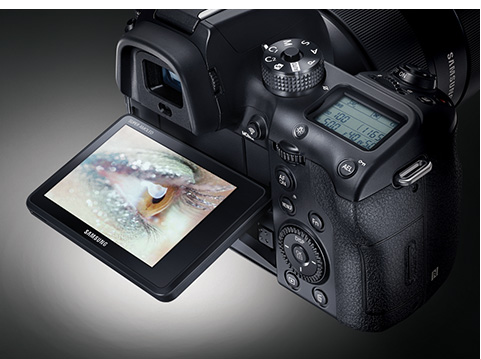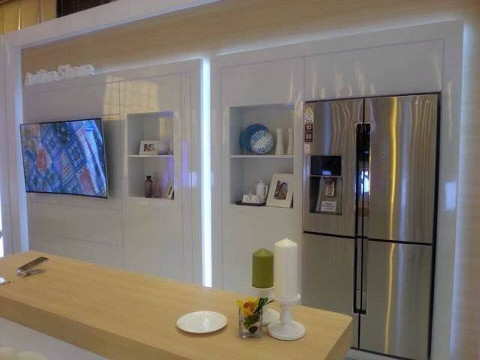
Legitimate questions have been raised as to whether Linux platforms designed for smartphones are as good as a tailored embedded Linux stack built from scratch. Yet, so far experiments outside the mobile realm have proven fairly successful. Over the last week, we saw how several of these platforms, including Firefox OS, Tizen, Ubuntu, and WebOS, are spreading out to new device types.
First, Mozilla revealed a Firefox OS port to the Raspberry Pi that it hopes will rival Raspbian. Also last week, Samsung showed off a Tizen-based smart TV prototype, as well as a new camera. In addition, specs for the first Ubuntu Touch-enabled tablet were floated on the web, and earlier last month, LG hinted at an upcoming WebOS smartwatch.
 Some of these projects, especially Tizen, were touted from the beginning as being able to expand to a variety of form factors. Yet, the smartphone has been the main focus, despite the fact that the only platform to actually ship in a phone so far is Firefox OS, and years ago, WebOS. Firefox OS continues to expand its budget phone launches in emerging markets, and higher-end phones shipping with Ubuntu and Tizen are likely to arrive by year’s end.
Some of these projects, especially Tizen, were touted from the beginning as being able to expand to a variety of form factors. Yet, the smartphone has been the main focus, despite the fact that the only platform to actually ship in a phone so far is Firefox OS, and years ago, WebOS. Firefox OS continues to expand its budget phone launches in emerging markets, and higher-end phones shipping with Ubuntu and Tizen are likely to arrive by year’s end.
Yet, the smartphone market is problematic to newcomers on several counts. First, it’s becoming increasingly saturated, leaving only the budget field open for major growth. Second, Android now runs better on lower-end hardware, and is better able to compete in emerging markets with Google’s new Android One support program. Android, of course, has a big advantage by dint of its huge library of mature apps.
At the same time, the Internet of Things revolution, spurred on by lower-cost wireless technology, means that more and more dumb appliances can benefit from being smarter. Many devices could benefit from apps, which is the main argument for using a mobile platform rather than building an embedded IoT gizmo from scratch.
Firefox OS based PiFxOS takes on Raspbian
At the Mozilla Festival held earlier this week in the U.K. , Mozilla unveiled a PiFxOS version of Firefox OS for the Raspberry Pi, also dubbed Foxberry Pi, with promises to make it competitive with Raspbian Linux. It’s currently a bleeding edge demoware build, but Mozilla appears to be serious about ramping it up, with an early focus on robotics hacking and media players.
PiFxOS is based on a Firefox OS port to the Pi developed by Oleg Romashin and Philip Wagner, which seems to have stalled. Mozilla plans to beef it up with support for sensors, control motors, LEDs, solenoids, and other components, as well as build a modified version for drones. A longer term project is to develop a DOM/CSS platform for robots using “a declarative model of a reactive system.”
Mozilla had already focused its attention on media players. Last month, a startup formed by Mozilla developers had a successful Kickstarter launch for the Matchstick HDMI stick computer running Firefox OS. The device offers  Chromecast-like content casting, as well as a $25 price.
Chromecast-like content casting, as well as a $25 price.
Samsung shows Tizen smart TV
Tizen has yet to ship in a smartphone, despite Samsung having announced a Tizen-based Samsung Z model earlier this year. Now, it appears that the first Tizen phone will ship by the end of the year in India instead of Russia. Meanwhile, Samsung is already on its second generation of Tizen-based smartwatches with the new Gear S, and last week Samsung showed off a long-rumored Tizen smart TV.
As reported by Brian Warner on Linux.com, Samsung and other companies demonstrated a variety of Tizen-based products and prototypes at the Tizen Developer Summit in Shanghai. Tizen backer Intel announced that Tizen 3.0 is on schedule for release by the year’s end.
One Tizen 3.0 enhancement is a feature that makes a common core set of code extendable to new form-factors using device-specific profiles. This is somewhat similar, although not as ambitious, as Canonical’s plans to develop a convergence release that enables an Ubuntu Touch app to run seamlessly on phone, tablet, and desktop.
Samsung also showed off the latest Tizen smartwatches and cameras. The latter have expanded from the NX300M camera announced a year ago to an NX30 model and a 28.2-megapixel NX1 camera that can capture 15 frames per second in a 70-frame burst.
Samsung orchestrated a product synergy demonstration in which a video running on a Tizen smartphone is transferred in progress using a Gear S watch to a prototype Samsung smart TV running Tizen. The video, which picked up where the phone left off, was then transferred back to the phone. Judging from the photo, a previously announced Tizen refrigerator prototype was also part of this kitchen-themed demo.
There was also a display showing the Tizen-based Modello IVI (in-vehicle infotainment) proof-of-concept UI. Several automotive IVI projects based on Tizen are already in the works.
Ubuntu tablet breaks cover
Over the years, Ubuntu has popped up on a number of minor tablet launches, but it was never optimized for touchscreens. With the new Ubuntu Touch interface, which added more tablet features in Ubuntu 14.04, a fairly polished tablet UI is now available. The first tablet with Ubuntu Touch could be a UT One design that was revealed by Phoronix this week. There were no photos of the tablet, which is designed by the Demski Group and Mastermind Hardware, but Phoronix posted a spec list.
The 10.1-inch tablet, which is to ship this quarter, runs Ubuntu Touch on a quad-core, 1.5GHz Intel Atom Z3735D processor. The UT One features 2GB of RAM, 16GB of storage, and a microSD slot, and offers an IPS touchscreen with 1280 x 800-pixel resolution. Other features include front- and rear-mounted 2-megapixel cameras, WiFi, Bluetooth 4.0 LE, and optional USB-based 3G.
Meanwhile, Meizu is expected to release a version of its new Meizu MX4 Pro smartphone running Ubuntu Touch by the end of the year. This will likely be the first Ubuntu phone, although Spain’s BQ is also expected to introduce an Ubuntu phone, as well.
WebOS to appear in smartwatch?
The Linux-based WebOS has had a long strange journey since its heyday late in the previous decade when it shipped on Palm Pre phones. After a short-lived career in HP tablets and phones, the OS was sold to LG, which revamped it and put it to work in a well-received LG Smart TV, as well as a signage computer. Now, it appears, a smartwatch is in the works.
In early October, The Verge noticed and recorded a web-page promoting an SDK for a round-faced WebOS SmartWatch. The web page was then pulled by LG.
Assuming the watch is legit, LG appears to be following Samsung’s lead in trying out several smartwatch platforms. Just as Samsung offers an Android Wear based Gear Live watch, in addition to its three Tizen watches, LG has already launched an Android Wear based G Watch and is now selling a round-faced follow-up called the G Watch R.
LG appears to be making the previously proprietary WebOS more open to outside developers. For a fully open version for mobile devices, you can turn to LuneOS, the new name for the Open WebOS project. In September, LuneOS released an Affogato build that supports HP’s previously WebOS-based TouchPad tablet, as well as LG’s Android-based Nexus 4.
And don’t forget Android…
The platforms noted above are still far less diversified than Android, which is the premiere shape shifter among mobile Linux OSes. In addition to offering Android for mobile devices and Android Wear for wearables, Google has this year launched an Android Auto platform, as well as an Android TV replacement for Google TV. Android TV is initially available on an Intel Atom-based, Asus-built Nexus Playerdevice running Android 5.0 (“Lollipop”).
These are only the official Android platforms. Android and forks of Android have appeared on all manner of devices, including media players, home automation devices, robots, and point-of-sales devices like the new Poynt PoS device. Clearly, whether you’re an established player or an emerging competitor, diversity is the name of the game.


